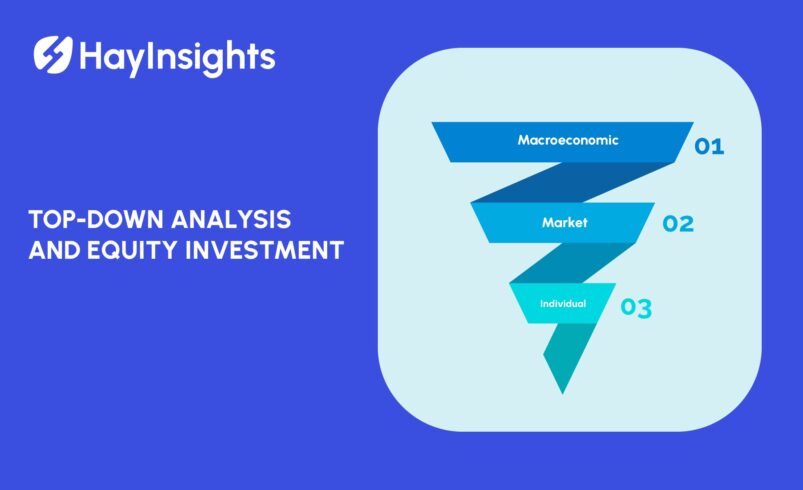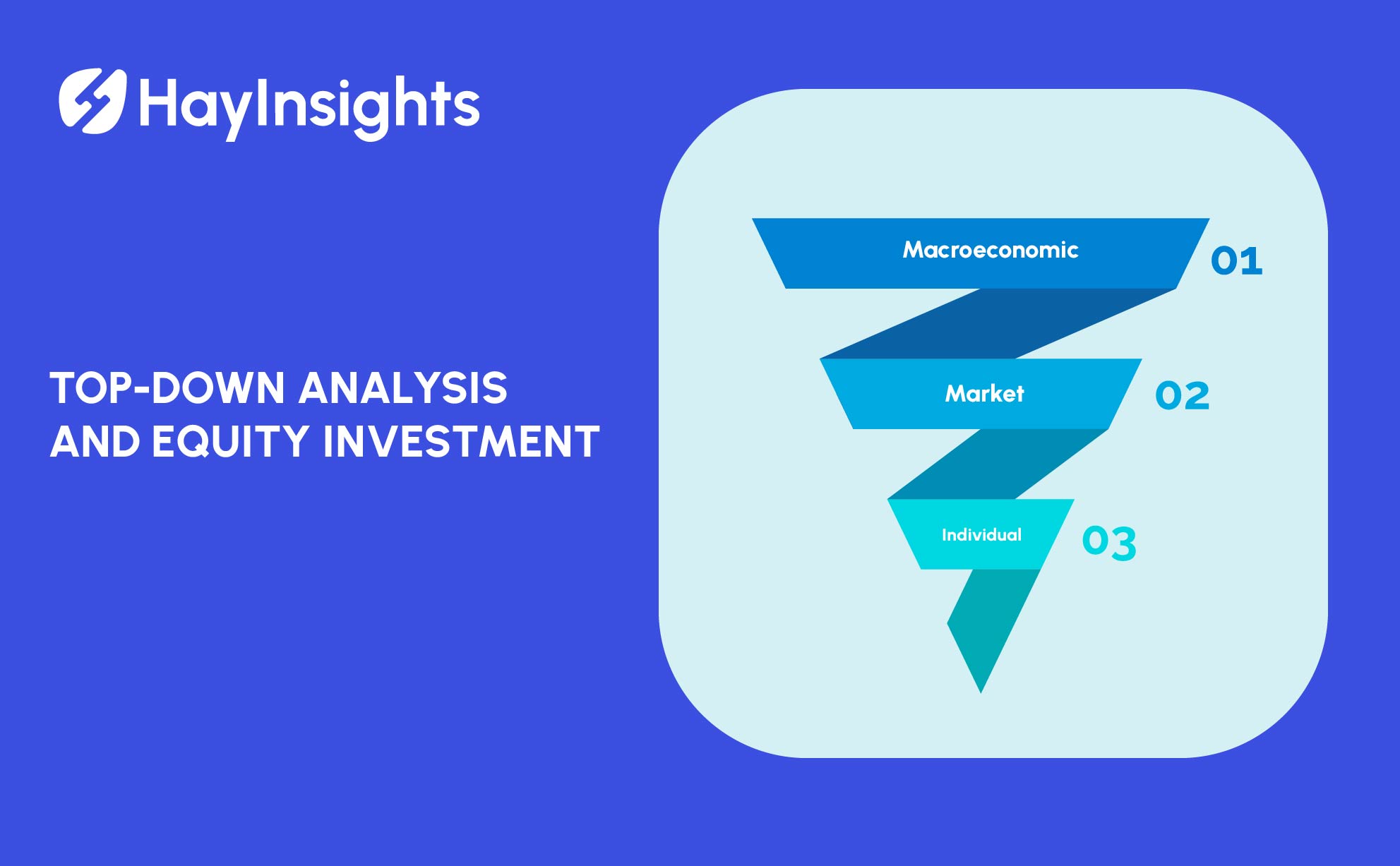
The Role of Top-Down Analysis for Long-Term Investors
In the intricate world of investing, particularly within the dynamic environment of equity markets, the strategic approach known as top-down analysis emerges as a powerful tool for long-term investors. This methodology, deeply reliant on the comprehensive utilization of various forms of financial data—ranging from macro data to specific market data—facilitates a nuanced understanding of investment landscapes. Such an approach is particularly pertinent when examining markets with unique growth prospects and challenges, such as the Japanese equity market. In this article, we’ll explore the essence of top-down analysis, underscore the paramount importance of financial data, and shed light on the relevance of this approach for investors eyeing the Japanese equity market and considering ETF investments.
Understanding Top-Down Analysis
At its core, top-down analysis is an investment strategy that begins with a macroscopic view of the economy before drilling down to identify specific investment opportunities. This method leverages a wide array of financial data, including economic indicators, sector performance metrics, and company-specific financial statements. By synthesizing this data, investors can make informed decisions that align with broader economic trends, enhancing the likelihood of long-term success.
The Importance of Financial Data
Financial data is the cornerstone of top-down analysis. Macro data, such as GDP growth rates, inflation figures, and unemployment statistics, offers investors a lens through which to view the overall health and direction of an economy. Market data, including stock indices performance and sectoral analysis, further refines this view, helping to identify which sectors are poised for growth or decline. Finally, granular financial data on individual companies, such as earnings reports, debt levels, and profitability ratios, allows investors to pinpoint the best investment opportunities within a promising sector.
In the context of long-term investment strategies, the importance of financial data cannot be overstated. It not only informs the initial investment decision but also supports ongoing portfolio management. By continuously monitoring financial data, investors can adapt to changing market conditions, ensuring their investment strategy remains aligned with their financial goals and risk tolerance.
The Case of Japan’s Equity Market
Japan’s equity market presents a fascinating case study for the application of top-down analysis. As the world’s third-largest economy, Japan offers a mature market with unique opportunities and challenges. The Japanese market is known for its technological innovation, strong corporate governance, and a rapidly aging population, each of which has distinct implications for investors.
To navigate the Japan equity market, investors must begin with a thorough analysis of macroeconomic conditions in Japan and globally. This includes understanding Japan’s monetary policy, trade dynamics, and demographic trends, all of which can significantly impact market performance. From there, sectoral analysis can reveal areas of potential growth. For instance, Japan’s prowess in technology and robotics suggests that these sectors may offer promising investment opportunities.
Additionally, the growing focus on ESG (Environmental, Social, and Governance) criteria among Japanese firms is reshaping investment landscapes, making it imperative for investors to incorporate ESG-related financial data into their top-down analysis.
Leveraging Official Sources and Financial Platforms
Top-down data is important, but where to find them is the big question? Begin your search with official sources such as central banks (e.g., the Bank of Japan), government departments (e.g., Japan’s Ministry of Finance, Japanese Cabinet Office,..), and international organizations (e.g., the International Monetary Fund). These institutions provide authoritative macroeconomic data, including GDP growth, inflation rates, and unemployment figures. For market data, consider exploring major financial news platforms like Bloomberg, Reuters, and CNBC, which offer real-time market insights, sector performance analyses, and equity market trends. These platforms often provide comprehensive coverage of the Japan equity market and other global markets.
Top-down data is often scattered across multiple sources. If you want to check out one source for all this information, try using HayInsights, an AI-powered, comprehensive top-down financial analysis hub, focusing on the Japanese market. HayInsights offer all information from macroeconomic to every individual ETF data, making it a one-stop hub for investors.
Utilizing Financial Research and Analysis Tools
For those looking to dive deeper, numerous financial research and analysis tools offer detailed sectoral and company-specific data. Platforms like Morningstar, Yahoo! Finance, and Google Finance provide access to a broad range of financial information, including earnings reports, balance sheets, and performance metrics of companies listed in the Japan equity market. Additionally, ETF-specific platforms can help investors find ETFs that align with their investment strategy, offering insights into holdings, performance, and sector focus.
On HayInsights, ETF data is analyzed via multiple tools, including ETF Performance Tracker and ETF Comparison, helping users to make better purchasing decisions.
Engaging with Financial Communities
Lastly, don’t underestimate the value of financial communities and forums, such as Seeking Alpha or the Financial Times’ Alphaville. These platforms can offer unique insights and analyses that may not be available through official sources. They also provide an opportunity to engage with other investors and analysts, potentially uncovering new perspectives on potential investment opportunities within the Japan equity market.
By systematically leveraging these resources, investors can gather the comprehensive financial data required for effective top-down analysis. This data serves as the foundation for identifying promising sectors and companies within the Japan equity market and beyond, enabling informed investment decisions that align with broader economic trends.
ETFs: A Tool for Implementing Top-Down Strategies
Exchange-Traded Funds (ETFs) are an effective vehicle for investors looking to apply a top-down analysis strategy in the Japan equity market. ETFs that focus on specific sectors or the entire Japanese market allow investors to gain broad exposure while benefiting from the diversification that ETFs naturally provide. Moreover, ETFs that track indices representing the Japanese market or specific sectors can help investors align their portfolios with the macroeconomic and sectoral insights gleaned from their top-down analysis.
By investing in ETFs, individuals can leverage market data and macro data without the need to conduct the exhaustive company-specific research required for direct stock investments. This approach not only simplifies the investment process but also enables investors to efficiently allocate their capital across the most promising sectors identified through their analysis.
Conclusion
Top-down analysis, underpinned by a rigorous examination of financial data, offers a structured pathway for long-term investors to navigate the complexities of the equity market. By starting with a macroeconomic overview and progressively focusing on sectors and companies, investors can align their portfolios with overarching economic trends.
The Japan equity market, with its blend of challenges and opportunities, exemplifies the importance of top-down analysis. By utilizing financial data to understand macro trends, sector dynamics, and company fundamentals, investors can uncover valuable investment opportunities. Furthermore, the strategic use of ETFs can facilitate the implementation of top-down analysis, enabling investors to capture growth while managing risk effectively.
In the end, the judicious application of top-down analysis, powered by comprehensive financial data, can significantly enhance the decision-making process for long-term investors, paving the way for sustained success in the equity market.












